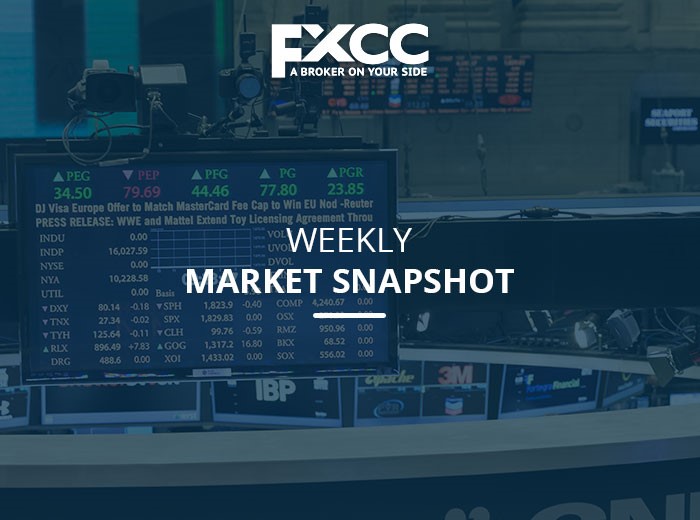Although macroeconomic influence is still evident in market behaviour, fundamentals began to impact the week’s trading sessions. Data listed on economic calendars such as GDP results, import/export figures, sentiment, Fed and ECB officials’ speeches, and inflation have all started to affect markets.
Market investors, traders and analysts are still making decisions based on factors such as the Pandemic, the US presidency and Brexit, but these issues are in some ways priced in. The UK has exited Europe, so the “deal or no deal” knife-edge chaos has ended. Biden gets inaugurated inside seven days. All economies and societies are starting to look past the current dire pandemic situation once the various vaccines have (hopefully) stopped the virus transmission.
Re-employment is the major challenge and opportunity in 2021
The most ominous challenge is how to rebuild the employment sectors once COVID-19 relents. The US economy registered a combined 1.4 extra weekly unemployment claims on Thursday, January 14, whereas the average was close to 100,000 (with as many jobs created each week) during pre-pandemic times. UK recruitment agents are now reporting 36% fewer vacancies than this time last year.
However, the challenge to rebuild employment throughout Europe and the USA could provide a one-off economic boost not seen for decades. Will the roaring 1920s get replicated in the 2020s if governments and central banks combine the stimulus in place and the pipeline? The explosion of movement, spending, speculation and investment could exceed anything seen in modern times once restrictions are lifted.
US equity indices in a holding pattern as Biden’s inauguration approaches
Weekly US indices traded down as the New York session got ready to open on Friday, January 15, futures markets indicated a negative open. The SPX is down -0.93% and the NASDAQ 100 down -1.59% weekly. All major indices are up marginally year-to-date.
Market participants have recently traded equity indices in narrow channels, and tight ranges in a waiting pattern as the presidential administrations get prepared to change over. Biden has promised to push through a $1.9 trillion fiscal stimulus package once he’s in place, and opinions differ regarding the stimulus already being priced in.
USD whipsaws in broad ranges in preparation of a new administration and stimulus
The US dollar has traded in wide and at times whipsawing ranges during the week as currency markets digested the USA’s various economic data and recent chaotic events in Washington. USD/JPY is down -0.28% weekly, USD/CHF is up 0.29%, GBP/USD is up 0.61%, and EUR/USD is down -0.68%.
The dollar index DXY is up 0.32% on the week. Once Biden’s administration injects the stimulus into the US economy USD will come under scrutiny. Equity markets could rise while the dollar falls if the stimulus isn’t already accounted for.
Economic calendar events to monitor carefully next week
A raft of Chinese data gets published early in Asia’s Monday session, investors and traders will focus on the GDP growth figures. The forecast is for the yearly GDP to increase from 4.9% to 5.9%. The prediction is for fixed-asset investment to show a rise of 3.2%, illustrating the overall faith investors have in the Chinese economy. China’s rapid bounce-back is a sobering lesson to western hemisphere administrations regarding controlling COVID-19 outbreaks.
On Tuesday the latest ZEW sentiment figures are published for the German and EZ economies. The forecast is a small fall in overall sentiment, which could impact on the value of EUR versus its peers. The prediction is Eurozone construction to fall by -1.6% year on year up to November.
CPI for the UK and Eurozone gets published on Wednesday. Reuters forecast marginal inflation rises in both economies. The Bank of Canada (BOC) releases its latest monetary policy report during the afternoon trading session, which could affect the value of CAD versus its peers.
The central bank will also broadcast its interest rate decision, and the expectation is no change from the 0.25% rate. Late evening Japan’s yen will come under the microscope when the newest export and balance of trade figures get released.
The Aussie dollar will be in play during Thursday’s Sydney session when the latest Aus. unemployment/employment data gets released. The COVID-19 impact on the Aus. economy and society has been negligible.
Like other Southern Hemisphere countries, the administration has handled the virus impeccably; less than 1,000 confirmed deaths so far. However, unemployment is forecast to creep up to 6% when the data gets published with only 50K jobs created in December.
During the Asian session, the BOJ reveals Japan’s latest interest rate decision, which will impact yen’s value if a change from -0.1% or an adjustment in their dovish monetary policy gets announced.
The ECB will announce the latest interest rate decision. There is no expectation for a change from the current 0.00% lending rate and -0.5% for deposits. Forty-five minutes after their decision is publicised, the ECB will hold a press conference. The euro could fluctuate during the speeches if any monetary policy change gets revealed.
The weekly unemployment claims figure from the USA is published on Thursday. Analysts will look for a fall in weekly claims from 1.4 million combined recorded in the previous week.
Friday’s calendar data begins with retail sales figures from the UK. December will show a rise due to Xmas shopping habits. Before the New York session opens, the latest January flash IHS Markit PMIs get published for several major EU economies and the UK. These data could shock analysts if the forecasts come true. For example, the prediction is for UK services to collapse to 38.4 from 49.4 and UK manufacturing to slump from 57.5 to 45.1. These are massive contractions and indicate that the UK destined for a severe double-dip recession which can only be tempered by further fiscal and monetary stimulus and the success of the vaccine rollouts.


